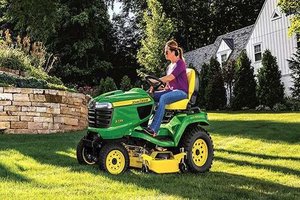As the fall weather begins to roll in, Ward Upham, horticulture specialist with K-State Research and Extension and Master Gardener coordinator, is sharing his tips for maintaining existing lawns. He notes that September is the optimal time to begin building healthier, thicker tall fescue grass for next year.
One tip he offers is to start mowing grass short (1 to 1.5 inches) and removing the clippings. By doing so, you can achieve good seed-soil contact and increase the amount of light that reaches young seedlings. Good seed-soil contact is essential if overseeding is to be successful, according to Upham.
When excess clippings are left on the lawn, seeds have a more difficult time reaching the soil, giving them less of a chance to germinate in the upcoming growing season. If the thatch layer is 3/4 inch or more, Upham says it’s easiest to use a sod cutter to remove it and start fresh with a new lawn. A power rake may also be used to take care of a thatch layer.
Once the thatch is under control, the soil can be prepped for seeding. A hand rake can be utilized to rough up the soil before the seed is applied. Upham says that for larger areas, a verticut machine or core aerator can get the job done.
“Of the three methods, I prefer the slit seeder for obtaining good seed/soil contact,” Upham said. “However, if watering is difficult, core aeration may be a better option. Regardless of the method used, fertilizer should be applied at the rate suggested by a soil test, or a starter fertilizer should be used at the rate suggested on the bag.”
More information on prepping your lawn for the upcoming season can be found in the K-State Research and Extension publication, “Tall Fescue Lawns.”
